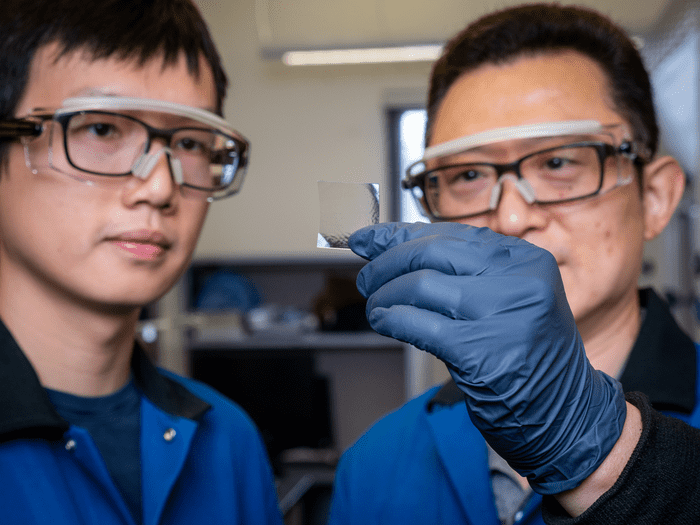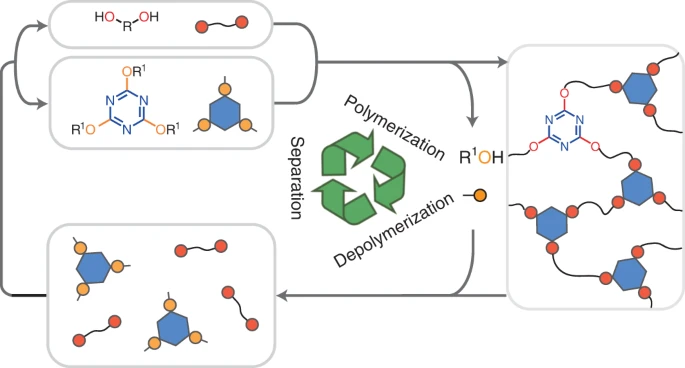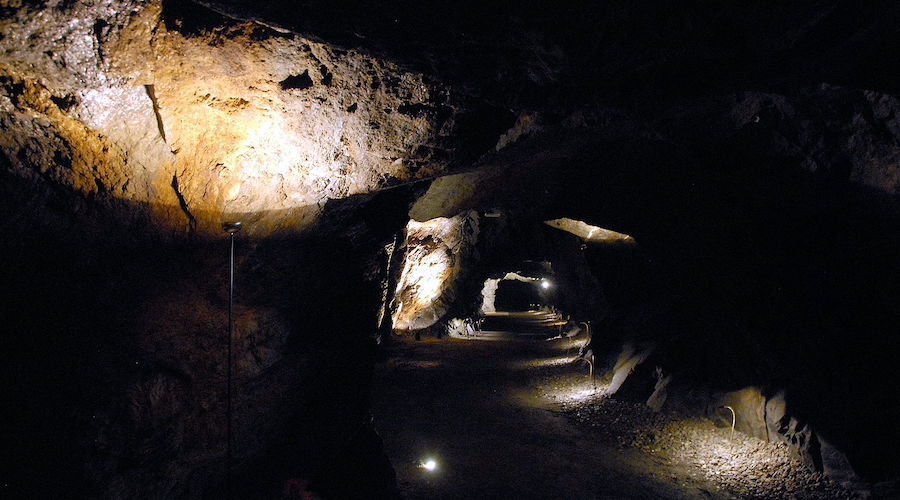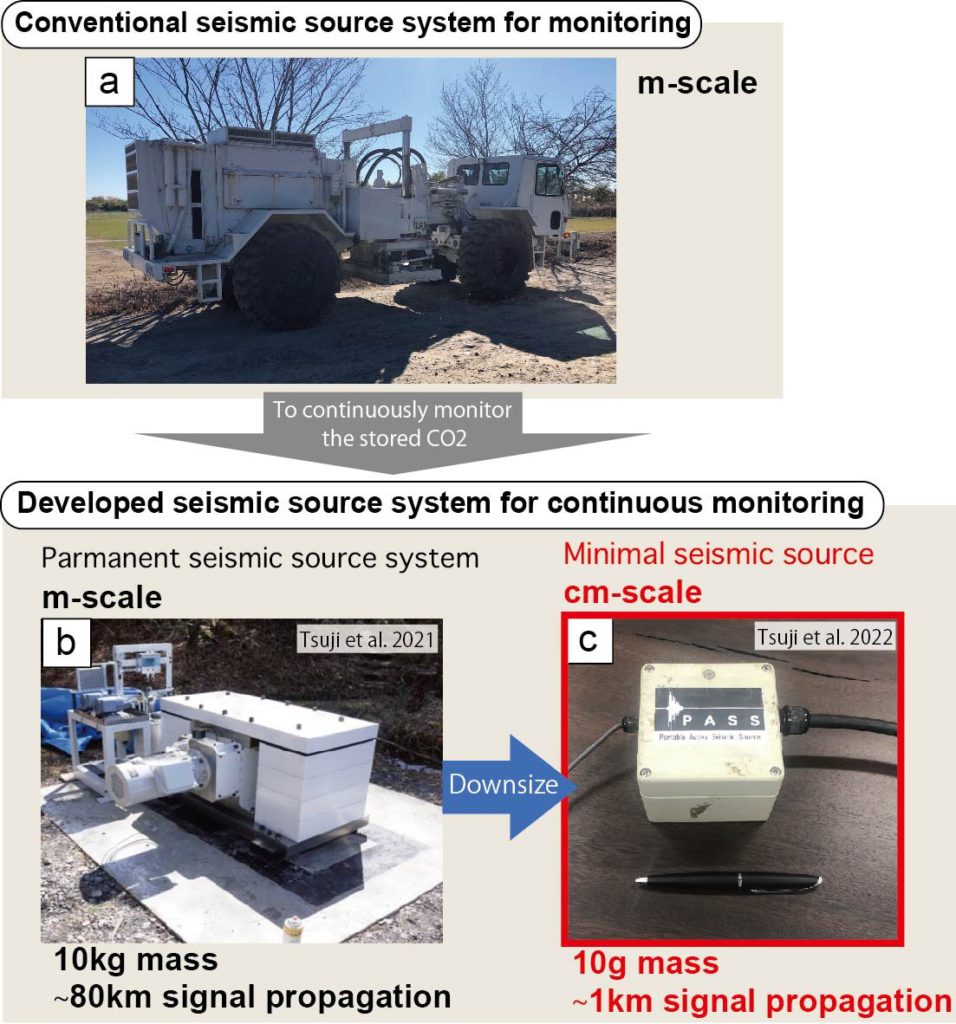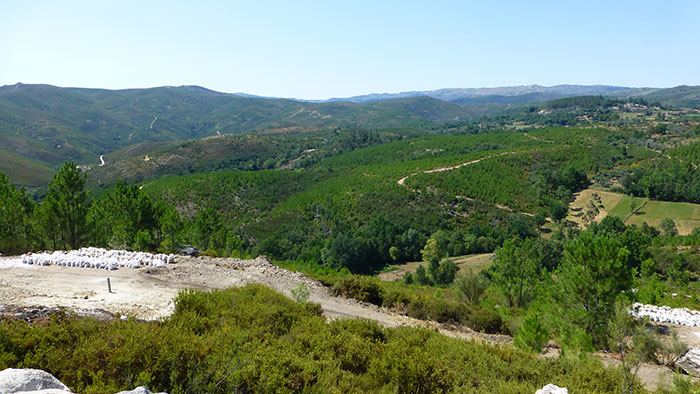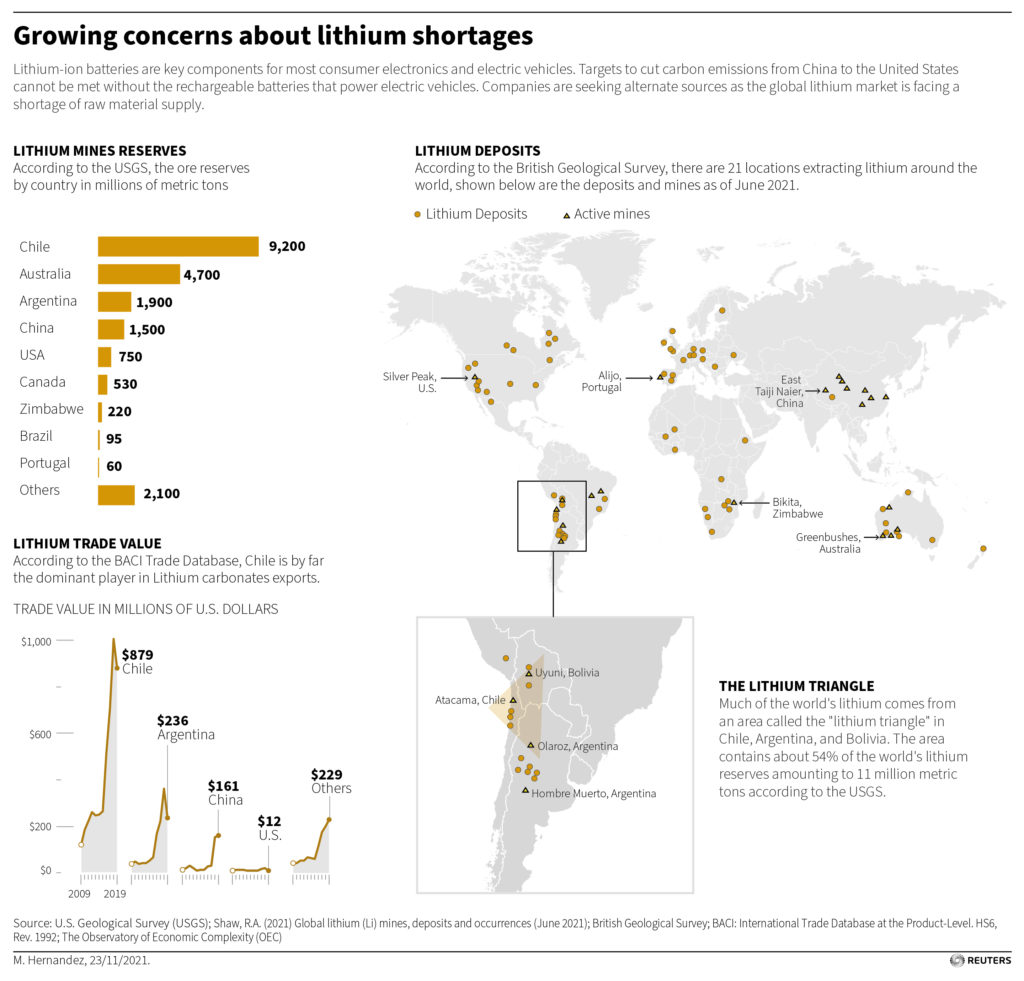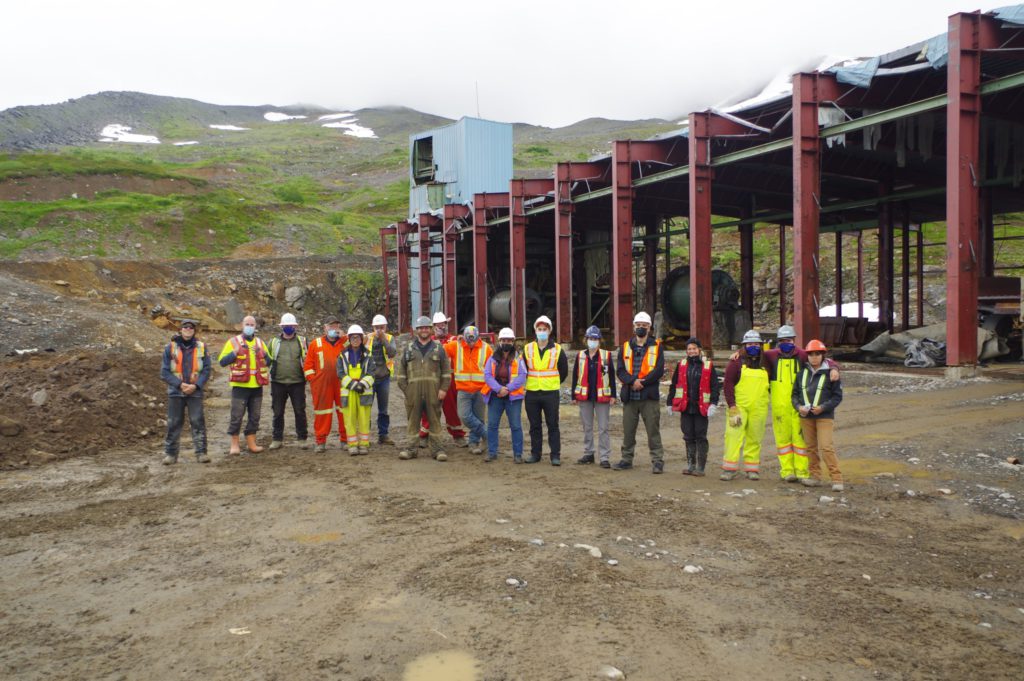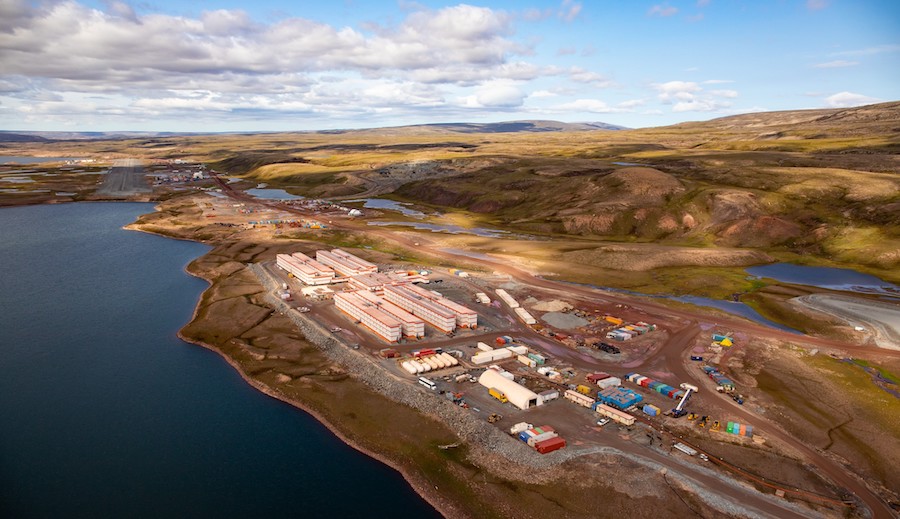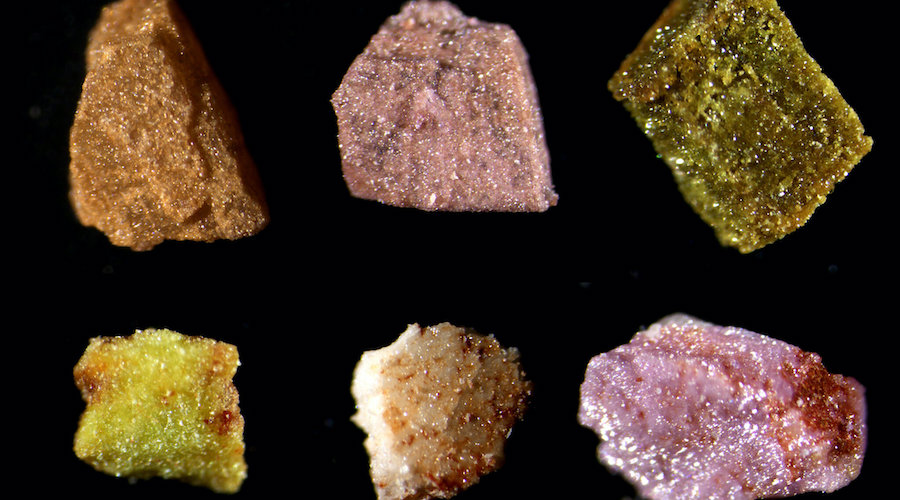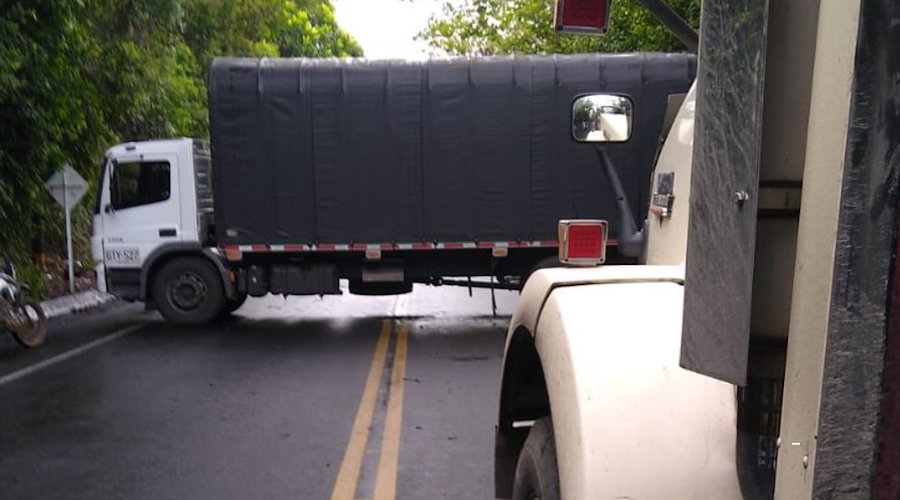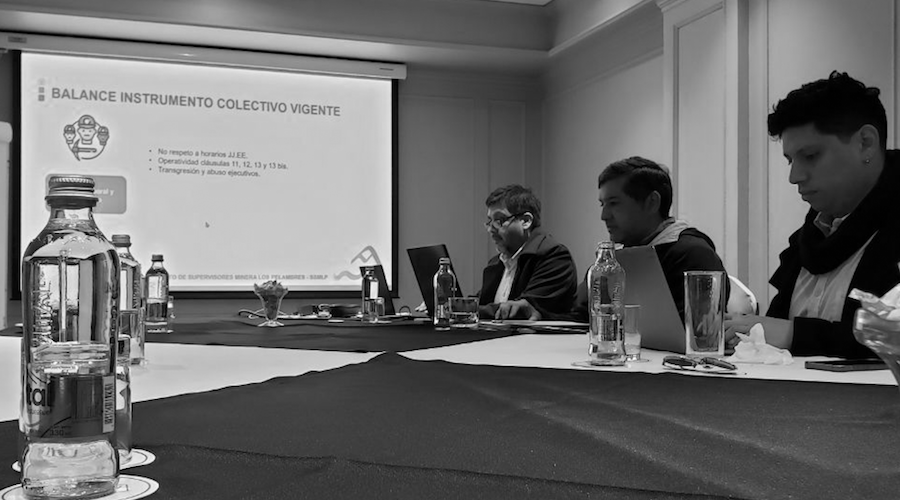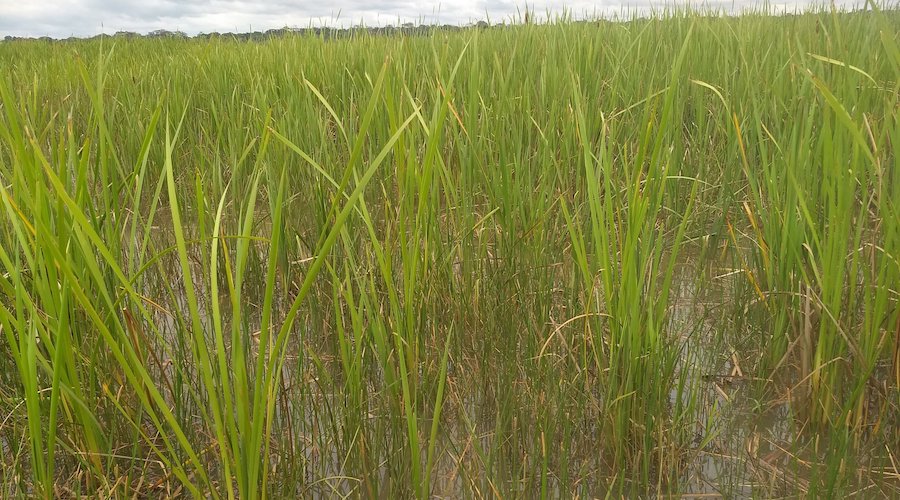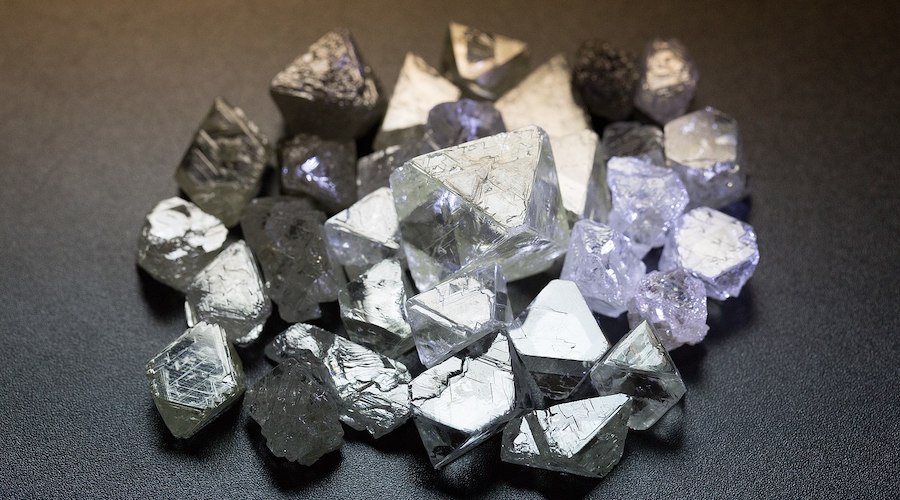Most plastic products can't be recycled back into their original form. It's time to change that.
Chemistry chair Wei Zhang (right) and Graduate Research Assistant Zepeng Lei study plastic materials in the Zhang Lab.
Credit: Patrick Campbell / University of Colorado Boulder.
Remember that plastic bottle you just disposed of in the recycling bin? By the most recent statistics, there is less than a one in three chance it will be recycled. If it does get recycled, there’s only a one in five chance it will be turned into a fresh plastic bottle used for food or beverages. And if that bottle is lucky enough to see a second life, there won’t be a third because the recycling process damages the plastic’s properties, and this is something that is true for all plastic-containing products.
But what if there was a way to recycle plastic a third, tenth, or even one-hundredth time? Researchers at the University of Colorado Boulder believe this is indeed possible. They just published a new study describing how they broke down a type of hard plastic commonly used in aerospace and microelectronics into its basic building blocks, which they used to forge the same exact type of plastic without it losing its desirable properties.
This sort of highly durable and hard plastic, known as thermoset polymers, is notoriously challenging to recycle because it can withstand extreme heat and harsh conditions by design. Even if cost was not an issue, the recycling process cancels out the desired properties of the polymer. But a new chemical method could change all that.
“We are thinking outside the box, about different ways of breaking chemical bonds,” said Wei Zhang, lead author of the study and chair of the chemistry department at the University of Boulder.
In a conventional recycling plant, plastic waste is mechanically broken down into powder form using huge grinding machines. The powder is then burned or bathed in a solution containing bacterial enzymes to dissolve and further break it down into smaller pieces. The flakes or pellets are then thermally treated and molded into new products.
Remember that plastic bottle you just disposed of in the recycling bin? By the most recent statistics, there is less than a one in three chance it will be recycled. If it does get recycled, there’s only a one in five chance it will be turned into a fresh plastic bottle used for food or beverages. And if that bottle is lucky enough to see a second life, there won’t be a third because the recycling process damages the plastic’s properties, and this is something that is true for all plastic-containing products.
But what if there was a way to recycle plastic a third, tenth, or even one-hundredth time? Researchers at the University of Colorado Boulder believe this is indeed possible. They just published a new study describing how they broke down a type of hard plastic commonly used in aerospace and microelectronics into its basic building blocks, which they used to forge the same exact type of plastic without it losing its desirable properties.
This sort of highly durable and hard plastic, known as thermoset polymers, is notoriously challenging to recycle because it can withstand extreme heat and harsh conditions by design. Even if cost was not an issue, the recycling process cancels out the desired properties of the polymer. But a new chemical method could change all that.
“We are thinking outside the box, about different ways of breaking chemical bonds,” said Wei Zhang, lead author of the study and chair of the chemistry department at the University of Boulder.
In a conventional recycling plant, plastic waste is mechanically broken down into powder form using huge grinding machines. The powder is then burned or bathed in a solution containing bacterial enzymes to dissolve and further break it down into smaller pieces. The flakes or pellets are then thermally treated and molded into new products.
Credit: Nature Chemistry.
Once a recyclable item goes through recycling, the plastic’s quality degrades with each iteration until it ultimately becomes totally unrecyclable. This means that a plastic bottle usually cannot be recycled into another plastic bottle. Instead, the recycled plastic will be turned into a bag or polymer clothing fabric. In the next iteration, a recycled plastic bag can become plastic lumber, a low-cost construction material. There is no way yet to recycle plastic lumber or fabrics, so the material’s lifetime reaches the end of its cycle and a landfill is the only remaining viable option.
Zhang and colleagues decided to follow a different route to plastic waste processing by breaking down the polymers into single monomers, a method the researchers call reversible or dynamic chemistry. These chemical units essentially represent a new class of plastic material that can be used to build things, break them apart, and rebuild them over and over again.
“This chemistry can also be dynamic, can be reversible, and that bond can be reformed,” said Zhang. “We are thinking about a different way to form the same backbone, just from different starting points.”
Although this dynamic chemistry method was tested on a particular type of hard plastic used in niche applications, the researchers claim it could be used on a broad range of classes of plastic so we can reuse those pesky plastic bottles time and time again. The chemical method can be adapted to current industrial recycling plants.
“It can really benefit future design and development of plastics to not only create new polymers, but it’s also very important to know how to convert, upcycle and recycle older polymers,” said Zhang. “By using our new approach, we can prepare many new materials—some of which could have similar properties to the plastics in our daily life.”
The findings appeared in the journal Nature Chemistry.

Tibi Puiu is a science journalist and co-founder of ZME Science. He writes mainly about emerging tech, physics, climate, and space. In his spare time, Tibi likes to make weird music on his computer and groom felines.
Once a recyclable item goes through recycling, the plastic’s quality degrades with each iteration until it ultimately becomes totally unrecyclable. This means that a plastic bottle usually cannot be recycled into another plastic bottle. Instead, the recycled plastic will be turned into a bag or polymer clothing fabric. In the next iteration, a recycled plastic bag can become plastic lumber, a low-cost construction material. There is no way yet to recycle plastic lumber or fabrics, so the material’s lifetime reaches the end of its cycle and a landfill is the only remaining viable option.
Zhang and colleagues decided to follow a different route to plastic waste processing by breaking down the polymers into single monomers, a method the researchers call reversible or dynamic chemistry. These chemical units essentially represent a new class of plastic material that can be used to build things, break them apart, and rebuild them over and over again.
“This chemistry can also be dynamic, can be reversible, and that bond can be reformed,” said Zhang. “We are thinking about a different way to form the same backbone, just from different starting points.”
Although this dynamic chemistry method was tested on a particular type of hard plastic used in niche applications, the researchers claim it could be used on a broad range of classes of plastic so we can reuse those pesky plastic bottles time and time again. The chemical method can be adapted to current industrial recycling plants.
“It can really benefit future design and development of plastics to not only create new polymers, but it’s also very important to know how to convert, upcycle and recycle older polymers,” said Zhang. “By using our new approach, we can prepare many new materials—some of which could have similar properties to the plastics in our daily life.”
The findings appeared in the journal Nature Chemistry.
Tibi Puiu is a science journalist and co-founder of ZME Science. He writes mainly about emerging tech, physics, climate, and space. In his spare time, Tibi likes to make weird music on his computer and groom felines.
